Expert Review of Top Customer Service Evaluation Tools
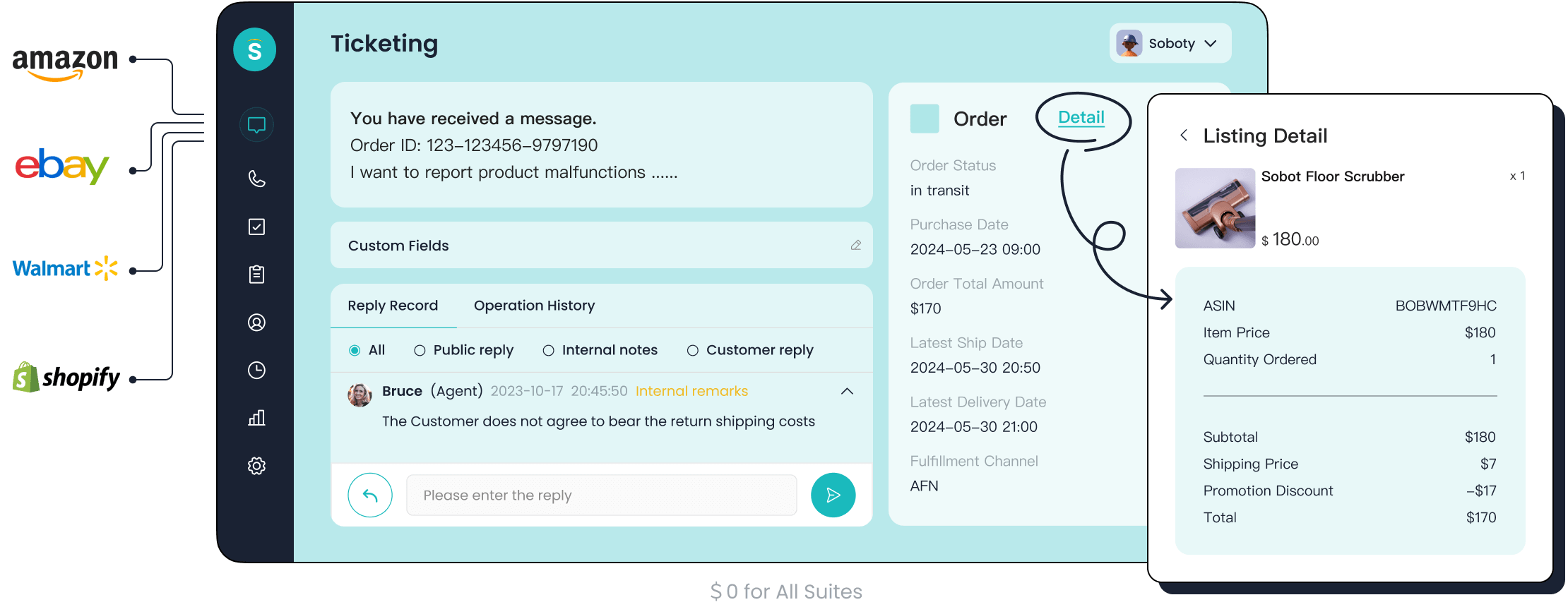
Customer service evaluation drives business growth and loyalty by improving satisfaction and experience. Leading tools in 2025 stand out with omnichannel support, AI-powered analytics, and seamless integration. Companies using advanced analytics become 23 times more likely to acquire customers and 6 times more likely to retain them. Sobot, with its Sobot AI and Sobot call center solutions, helps companies deliver a unified experience. Platforms that automate evaluation tasks see a 42% increase in agent efficiency and a 35% boost in satisfaction, showing the impact of the right tool.
Customer Service Evaluation Overview
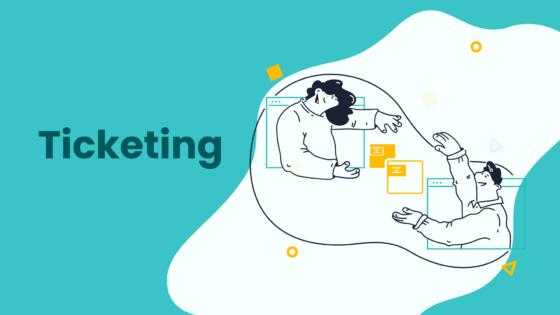
What Is Customer Service Evaluation
Customer service evaluation measures how well a business meets customer needs at every touchpoint. Companies use customer survey tools to gather real-time feedback and track satisfaction. These tools help teams understand the voice of the customer and improve the overall experience. Businesses often use frameworks like the Service Blueprint, RATER Model, and customer journey mapping to visualize and optimize service processes. Customer service evaluation also involves collecting data through surveys, monitoring agent performance, and analyzing real-time interactions. Sobot, for example, offers customer survey tools that support real-time feedback and customer satisfaction tracking across multiple channels, making it easier for companies to manage customer experience management and customer relationship management.
Tip: Regular customer feedback collection through surveys helps businesses identify strengths and areas for improvement, leading to higher satisfaction and loyalty.
Key Metrics and Standards
Companies rely on specific metrics to evaluate customer service. These metrics come from customer survey tools and real-time analytics. The table below shows the most important metrics and industry standards:
| KPI Category | Metrics Included | Industry Standards / Notes |
|---|---|---|
| Response | First Response Time, Average Response Time | First Response Time: 15 minutes for general queries, 2 minutes for calls; Average Response Time: ~3.5 seconds |
| Value and Happiness | Customer Satisfaction Score, Customer Effort Score, Net Promoter Score | Focus on satisfaction and value delivered, not just speed. |
| Volume | Total Ticket Volume, Tickets Solved, Agent Touches | Tracks query volume and agent workload to assess capacity and efficiency. |
| Additional Metrics | Cost per Resolution, Customer Retention, Query Topics | Used for deeper insights into cost efficiency and loyalty. |
Customer survey tools often measure satisfaction using Customer Satisfaction Score (CSAT), Customer Effort Score (CES), and Net Promoter Score (NPS). Real-time feedback from surveys helps companies adjust their approach quickly. Sobot’s omnichannel platform provides real-time analytics and survey integration, supporting customer relationship management and customer satisfaction tracking.
Why It Matters
Customer service evaluation directly impacts business outcomes. Companies that use customer survey tools and real-time feedback see higher satisfaction and loyalty. For example, PayPal improved its NPS by 5 points and saw a 12% increase in customer retention, which led to more repeat transactions and higher revenue. Retaining customers costs much less than acquiring new ones, and reducing churn by 15% can save millions each year. Real-time survey data allows businesses to act quickly, turning negative experiences into positive ones and strengthening the voice of the customer. Companies with high NPS often double their market share and attract valuable partnerships. Sobot’s solutions help businesses collect real-time feedback, manage customer experience, and improve satisfaction through unified customer survey tools and analytics. This approach supports both customer relationship management and long-term growth.
Top Customer Service Evaluation Tools
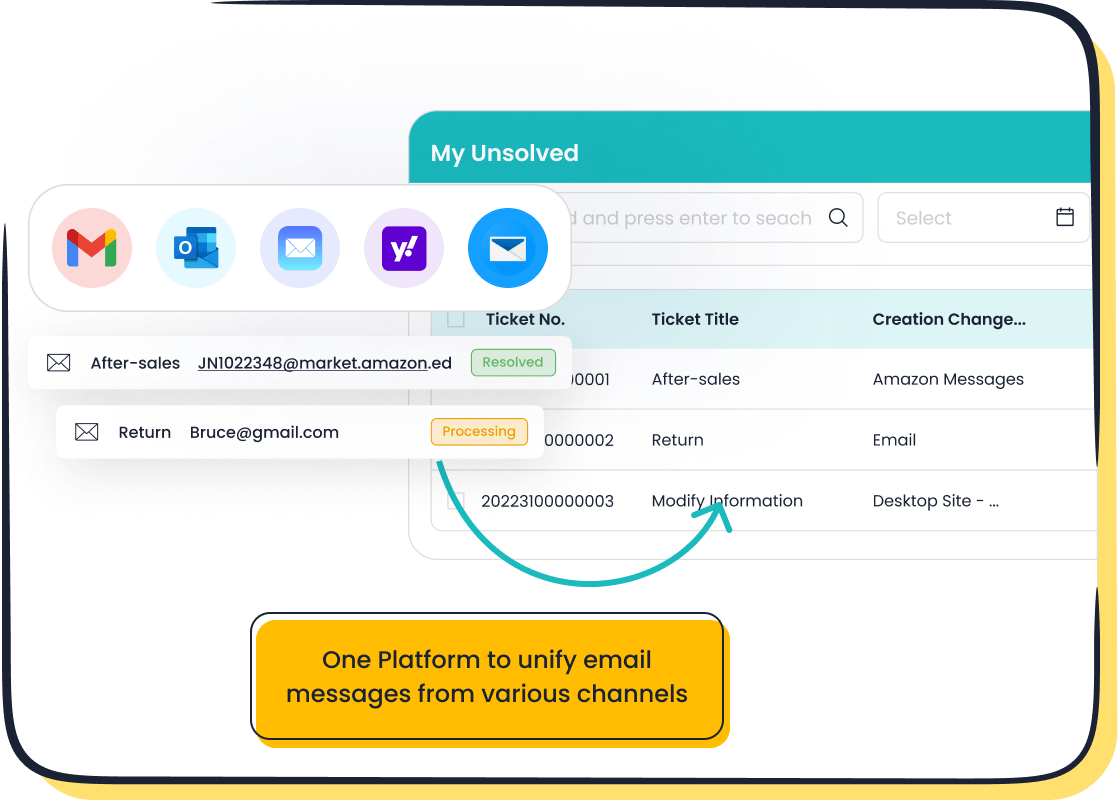
Comparison Table
Selecting the right customer survey tools can transform how companies measure satisfaction and improve service. The table below compares leading customer support tools on features, channels, AI, analytics, and pricing. Sobot stands out with its conversational AI, real-time sentiment analysis, and multilingual support. Its help desk ticketing system and live chat software integrate seamlessly with WhatsApp, SMS, and social media, making it a strong choice for global businesses.
| Tool | Main Features | Supported Channels | AI Capabilities | Analytics & Scalability | Pricing Structure |
|---|---|---|---|---|---|
| Sobot | Conversational AI, chatbot, live chat, ticketing, real-time sentiment analysis, multilingual | WhatsApp, SMS, social media, API | AI assistant, chatbot with sentiment analysis | Real-time analytics, customizable dashboards, 50+ languages, scalable for large data volumes | Free to $150/month (Basic), $800-$1,200/month (Mid-Market), $3,000-$10,000+/month (Enterprise) |
| Qualtrics | Flexible survey and digital interaction tools, Digital XM | APIs, SDKs, multiple platforms | AI for survey and feedback analysis | Real-time analytics, tag manager, scalable for large data volumes | $420/month (small business), $28,533/year average, enterprise custom |
| Lexalytics | Sentiment analysis, intention analysis, cloud/on-premises | Cloud APIs, on-premises | NLP with sentiment, intention, entity recognition | Real-time analytics, 29 languages, processes billions of words daily | $10,000+ (cloud), $40,000+ (NLP platform) |
| IBM Watson NLU | Sentiment, emotion, entity, syntax analysis, customizable models | API integration | Sentiment, emotion, entity recognition AI | Real-time analytics, 13 languages, scalable to millions of items/month | Lite free, pay-as-you-go, custom models $800/month |
| Brandwatch Cortex | Social media monitoring, PR focus, multi-channel integration | REST API, multiple platforms | Real-time sentiment and trend analysis | Real-time analytics, multilingual support | Custom enterprise pricing |
| Chattermill | Multi-channel feedback, AI-driven sentiment and topic extraction | APIs, CRM platforms | AI and ML for sentiment, language detection | Real-time analytics, 16+ languages, scalable for large data volumes | Data credit system, Pro to Enterprise plans |
| Wonderflow | E-commerce review analysis, real-time analytics | Salesforce CRM, APIs | AI-powered sentiment and feedback analysis | Real-time analytics, multilingual support | Starting around $20,000/year |
| Sprout Social | Social media management, sentiment analysis | Social platforms, CRM | AI for sentiment and engagement analysis | Real-time analytics, multilingual support | $199/user/month |
Note: Sobot’s help desk ticketing system and customer survey tools offer unified management across channels, making it ideal for businesses seeking efficiency and scalability.
Best Use Cases
Different customer survey tools fit different industries and business sizes. Sobot’s customer support tools serve retail, finance, gaming, and enterprise services. Its customer survey tools and help desk ticketing system support companies like OPPO, Samsung, and Luckin Coffee. Sobot’s customer service tools help large enterprises manage high volumes of survey data and customer interactions. Qualtrics works well for organizations needing advanced survey customization and analytics. Lexalytics and IBM Watson NLU suit businesses that require deep sentiment analysis in multiple languages.
Help Scout and Zoho Desk fit small to mid-sized businesses that want easy-to-use customer support tools. Chattermill and Wonderflow focus on e-commerce and feedback management. Sprout Social targets brands that need social media analytics. The chart below shows user ratings for popular customer survey tools and customer support tools.
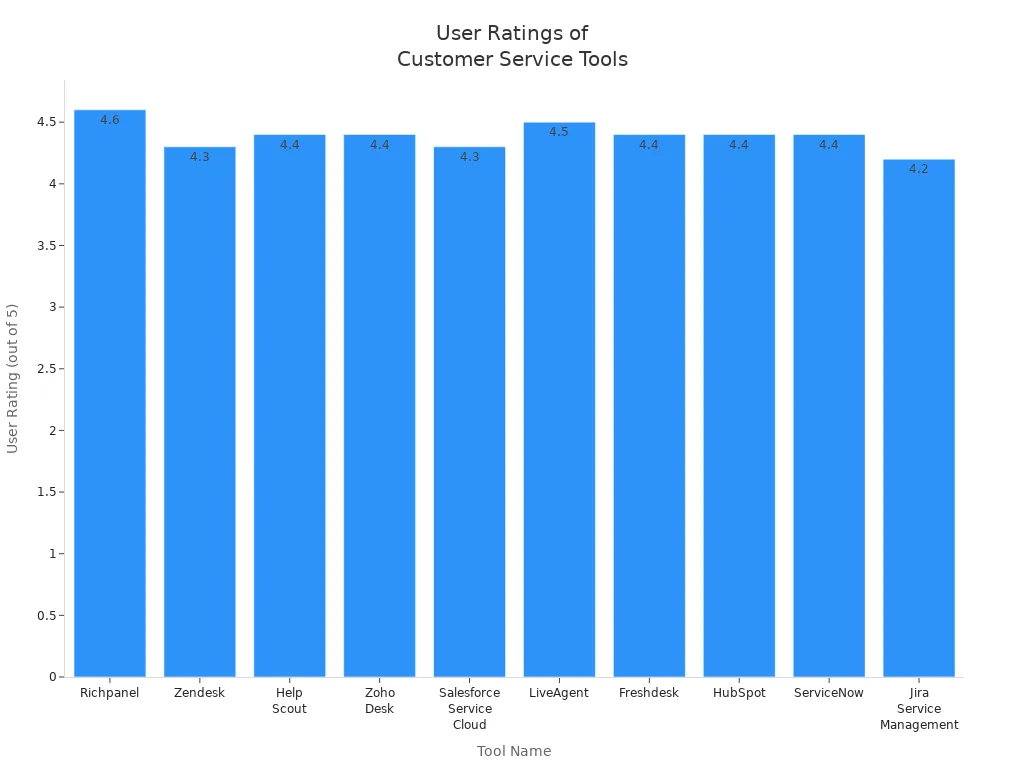
Sobot’s customer survey tools and live chat software help companies collect real-time survey feedback, automate responses, and improve customer relationship management. Its customer service software supports multilingual survey distribution and advanced analytics, making it a top choice for global brands. Companies that use Sobot’s help desk ticketing system see faster response times and higher satisfaction scores.
In-Depth Reviews of Customer Support Tools
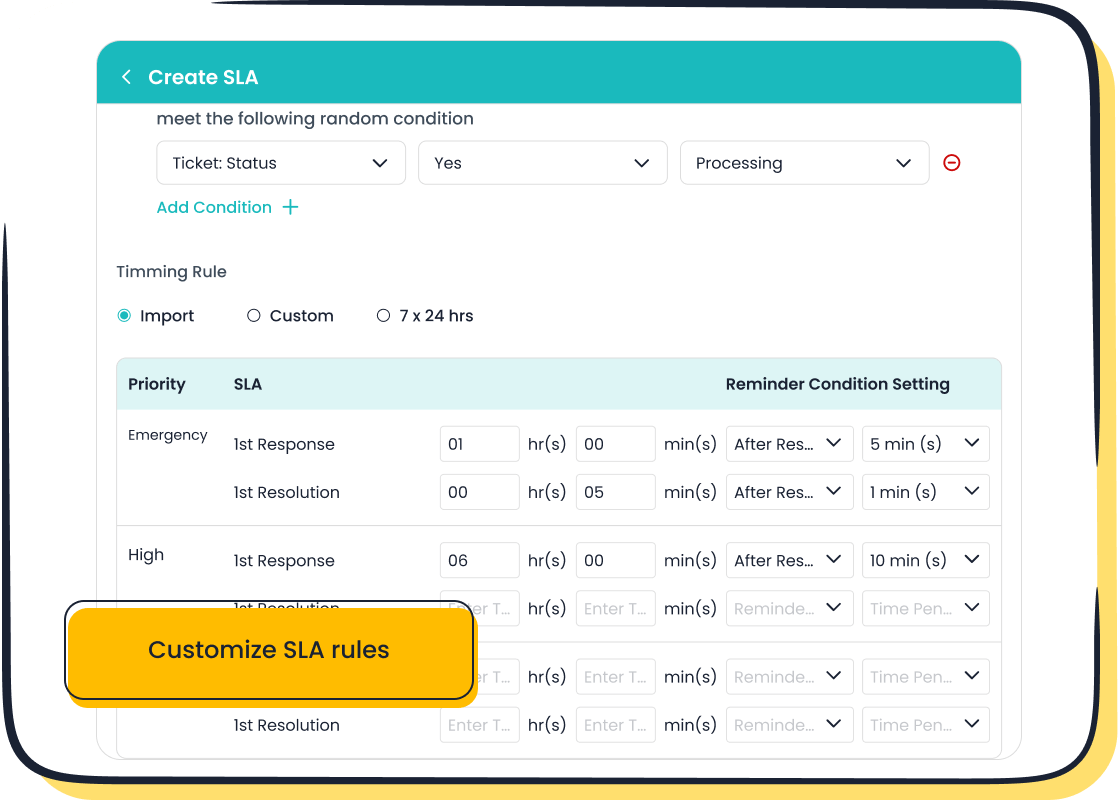
Sobot Ticketing System
Sobot Ticketing System stands out among customer support tools for its advanced AI-driven analysis, real-time insights, and seamless omnichannel integration. Businesses can manage all customer interactions from one platform, including WhatsApp, SMS, email, and live chat software. Sobot’s help desk ticketing system uses AI to automate ticket creation, routing, and response, which reduces manual work and increases agent productivity.
| Tool | Unique Features | Pricing Details | Best For | Notable Results |
|---|---|---|---|---|
| Sobot Ticketing System | AI-driven analysis, real-time insights, multilingual support, omnichannel integration (WhatsApp API, chatbot) | Starting at $30/month for SMBs; custom enterprise solutions | Retail, ecommerce, finance, gaming | 40% cost reduction, 43% ticket deflection, improved satisfaction, faster response times |
Sobot’s integration with WhatsApp Business API and chatbot automation allows companies to handle up to 70% of routine queries automatically. This frees agents to focus on complex issues. The platform supports over 50 languages, making it ideal for global brands. Sobot’s flexible pricing adapts to business size and seasonal demand, which helps companies control costs.
Sobot’s customer support tools helped OPPO achieve an 83% chatbot resolution rate and a 94% positive feedback rate. OPPO also saw a 57% increase in repurchase rate after implementing Sobot’s solutions. Read the OPPO story
Sobot’s help desk ticketing system provides trusted analytics, SLA management, and smart notifications. Users report up to 95% satisfaction and significant operational improvements. The platform’s user-friendly interface and customizable AI chat features make it easy for teams to adopt and scale.
Zendesk
Zendesk is a well-known name in customer support tools, offering a comprehensive ticketing system, live chat software, and omnichannel communication. The platform integrates email, chat, voice, and social messaging, providing a unified workspace for support teams.
| Pricing Tier | Price (per agent/month) | Key Features Included |
|---|---|---|
| Suite Team | $55 | Ticketing, email/chat/voice/social messaging, help center, AI agents, analytics dashboards, macros, automations |
| Suite Growth | $89 | All Team features plus multiple ticket forms, light agents, SLAs, satisfaction ratings, multilingual content |
| Suite Professional | $115 | All Growth features plus live analytics, side conversations, skills-based routing, HIPAA-enabled |
| Suite Enterprise | By quotation | All Professional features plus sandbox, AI-powered content cues, custom agent roles, contextual workspaces |
Zendesk’s strengths include an intuitive interface and efficient automation tools. The platform’s analytics dashboards help companies track satisfaction and agent performance. Zendesk Benchmark allows organizations to compare their metrics with industry peers, using a rolling 28-day window for up-to-date insights.
However, Zendesk’s pricing can be high for small businesses, especially when scaling up or adding advanced features. Some users report a steep learning curve and mixed experiences with customer support. Zendesk holds a G2 rating of 4.3 out of 5, reflecting strong but not top-tier user satisfaction.
Qualtrics
Qualtrics provides a robust suite of customer support tools focused on customer experience management. The platform includes Voice of Customer, omnichannel experience management, contact center analytics, quality management, and agent coaching. Qualtrics connects customer feedback to business KPIs, helping companies improve satisfaction and retention.
- Qualtrics offers freemium and flat-rate subscription models.
- The platform uses conjoint analysis to optimize pricing and understand customer willingness to pay.
- Qualtrics integrates with over 100 platforms, supporting seamless data collection and analysis.
- AI-powered features predict customer needs and enable proactive service improvements.
Qualtrics has earned recognition as a leader in Customer Feedback Management Solutions, scoring highest in innovation, analytics, and usability. Companies using Qualtrics report increased customer retention, faster order cycles, and cost savings. For example, Dow improved digital experiences and achieved financial goals through Qualtrics’ tools.
Pricing details are not public, but the platform is known for its flexibility and scalability. Qualtrics is best suited for organizations that need advanced analytics and deep integration with other business systems.
SurveyMonkey
SurveyMonkey is a popular choice for customer support tools, especially for collecting and analyzing customer feedback. The platform offers a range of plans for individuals, teams, and enterprises, with features tailored to different business needs.
| Pricing Tier | Price (per month) | Key Features Relevant to Customer Service Evaluation |
|---|---|---|
| Free Plan | $0 | Up to 10 questions, 25 responses viewable, basic features |
| Individual Plans | Standard: $99 | Unlimited surveys/questions, 1,000 responses, basic reporting, email support |
| Advantage: $39 (annual) | Mobile app surveys, recurring surveys, multilingual, skip logic, advanced analytics | |
| Premier: $199 (annual) | All Advantage features + remove branding, phone support | |
| Team Plans | Team Advantage: $25/user | 50,000 responses, collaborative tools, shared templates, advanced permissions |
| Team Premier: $75/user | 120,000 responses, sentiment analysis, advanced logic, phone support | |
| Enterprise Plans | Custom pricing | Enhanced security, unlimited API access, dedicated Customer Success Manager |
SurveyMonkey’s customer support tools include pre-built templates, customizable surveys, analytics, and multi-channel distribution. The platform integrates with Salesforce, HubSpot, Microsoft Teams, and Slack. Businesses praise SurveyMonkey for its ease of use and ability to launch targeted surveys quickly.
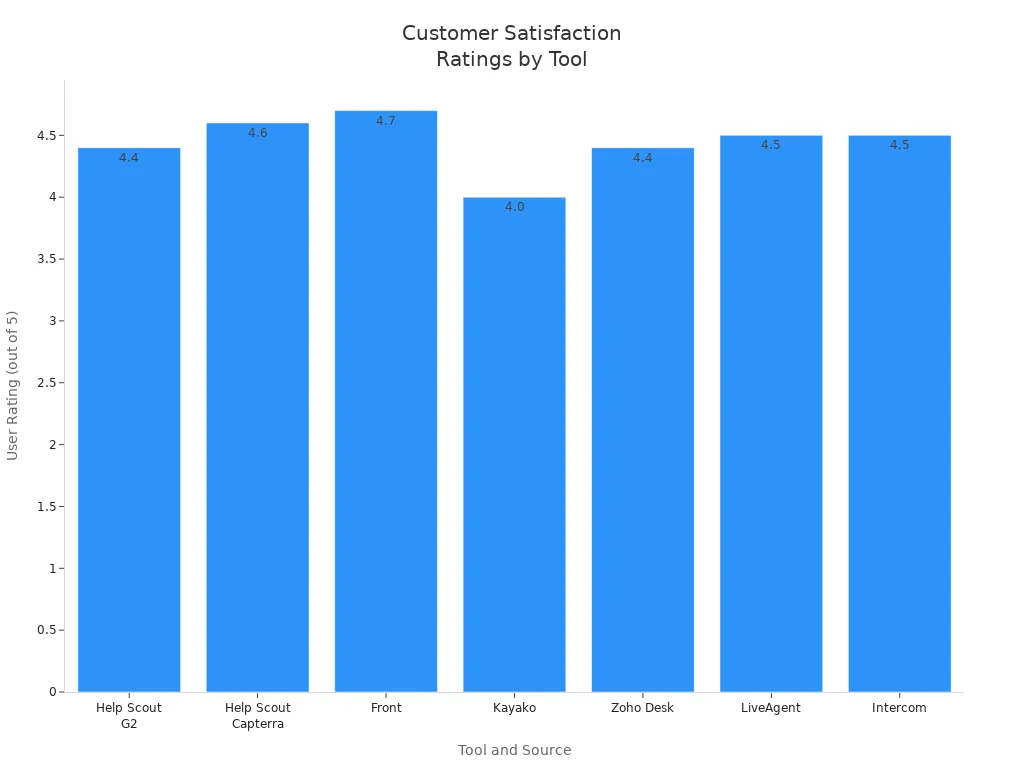
SurveyMonkey holds a user rating of 4.4 out of 5 on G2, based on over 22,000 reviews. The platform helps companies gather, analyze, and act on customer feedback, improving satisfaction and service quality. However, advanced features require higher-tier plans, and some users note a learning curve for beginners.
Kaizo
Kaizo brings AI-powered automation to customer support tools, focusing on real-time quality assurance and agent performance. The platform rates 100% of tickets in real time, using sentiment and empathy analysis to detect customer mood and agent behavior.
- Real-time feedback and customizable review cycles
- AI-generated personalized missions to motivate agents
- Knowledge bases and chatbots for self-service automation
- Trigger-based events for proactive outreach
- Samurai Empathy Score for objective agent evaluation
- GPT-powered summaries for quick insights
Kaizo’s basic plan starts at $29 per month, with a free trial available. The platform is cloud-hosted and supports web-based access. Kaizo targets self-employed professionals, small businesses, and midsize teams.
Kaizo’s unique strengths include automated quality assurance, real-time performance feedback, and coaching tools for managers. The platform promotes transparency, open communication, and gamification, which boosts agent engagement and reduces turnover. AI tools help increase agent productivity by automating repetitive tasks, allowing agents to focus on delivering great service.
Help Scout
Help Scout is a customer support tool designed for teams that value collaboration and simplicity. The platform offers a unified team inbox, customizable workflows, and automation features to streamline support operations.
| Category | Details |
|---|---|
| Main Features | Customization, user and role management, reporting, dashboards, ticketing workflows, automation, live chat, knowledge base, attachments, email to case conversion, ticket collaboration, customer/contact database, multi-channel communication, CRM and e-commerce integrations |
| Advantages | Unified inbox, comprehensive customer profiles, automation, multi-channel support, insightful analytics, robust security, scalability, user-friendly interface |
| Pricing Options | Subscription-based, per user monthly, multiple tiers, free trial available |
Help Scout’s help desk ticketing system and live chat software make it easy for teams to manage customer inquiries across channels. The platform’s reporting and analytics tools help companies track satisfaction and agent performance. Help Scout scores 4.4 out of 5 on G2 and 4.6 out of 5 on Capterra, reflecting strong user satisfaction.
The platform’s strengths include quick response times, 24/6 support, and an intuitive interface. However, it lacks some advanced features like SLA management and social media integration. Help Scout is ideal for small to mid-sized businesses seeking a straightforward customer service software solution.
Sprinklr
Sprinklr is an enterprise-grade customer support tool that centralizes communication from social media, messaging apps, email, and web chat. The platform’s AI-powered automation handles common questions, enabling quick issue resolution and freeing agents for complex tasks.
| Feature Category | Details |
|---|---|
| Omnichannel Management | Centralizes communication from social media, messaging apps, email, and web chat |
| AI-powered Automation | Automated responses to common questions for quick issue resolution |
| Advanced Analytics | Sentiment analysis, performance insights, and reporting |
| Customizable Workflows | Supports collaboration and complex query handling |
| Security | Robust security features for enterprise scalability |
| Customer Service Tools | Ticketing, live chat, phone & SMS support, customer surveys, SLA management, multilingual support |
| CRM Integration | Integrates with CRM systems |
| Pricing Plan | Self-serve plan at $199 per month; no free version available |
Sprinklr’s advanced analytics provide sentiment analysis and performance insights, helping companies monitor satisfaction and optimize support. The platform supports customizable workflows and robust security, making it suitable for large enterprises in retail, finance, healthcare, and telecommunications.
Sprinklr’s strengths include unified customer insights, real-time monitoring, and powerful integration capabilities. Users commend its customizable dashboards and ability to manage complex omnichannel customer service needs. However, new users may find the platform complex, and mobile app functionality is limited.
Tip: When choosing customer support tools, consider your company’s size, industry, and the need for features like AI automation, omnichannel integration, and advanced analytics. The right tool can improve satisfaction, reduce costs, and boost agent productivity.
Choosing Customer Survey Tools
Selection Criteria
Selecting the right customer survey tools shapes the quality of feedback and the effectiveness of service improvements. Companies should look for survey platforms that offer omnichannel distribution, real-time analytics, and easy integration with existing systems. The best customer survey tools support multiple languages and allow for customizable survey templates. Sobot provides customer survey tools that unify feedback from email, chat, and social media, making it easier to track customer satisfaction. Businesses should also consider scalability, automation features, and data security. A tool that automates survey distribution and response analysis saves time and reduces errors. According to industry research, 72% of organizations see higher satisfaction when using automated customer survey tools.
Tip: Choose customer survey tools that align with your business goals and support the channels your customers use most.
Implementation Steps
Integrating customer survey tools into daily workflows requires careful planning. Companies often follow these steps:
- Analyze current workflows and map out customer service processes.
- Define clear roles and responsibilities for each survey-related task.
- Integrate customer survey tools with data sources and communication channels.
- Configure automation for survey distribution and response collection.
- Develop a project plan with objectives, timelines, and stakeholder communication.
- Test the survey workflows for accuracy and timing.
- Train team members on using the new customer survey tools.
- Monitor survey results and gather feedback for continuous improvement.
Sobot’s customer survey tools offer seamless integration and user-friendly interfaces, making training and adoption straightforward.
Common Mistakes
Many companies make mistakes when adopting customer survey tools. Some launch surveys without clear objectives, leading to irrelevant data. Others fail to integrate survey results with customer profiles, missing valuable insights. Overcomplicating survey design can confuse respondents and lower response rates. Neglecting to act on survey feedback reduces trust and engagement. Companies should avoid these pitfalls by setting clear goals, keeping surveys simple, and using analytics to drive action. Sobot’s customer survey tools help businesses avoid these mistakes by providing actionable insights and easy-to-use dashboards.
Trends in Customer Service Evaluation
AI and Automation
AI and automation now shape the future of customer service evaluation. Companies use AI-driven virtual assistants to guide customers through troubleshooting, which enhances self-service and improves the overall experience. Automated sentiment analysis uses natural language processing and machine learning to assess tone and context in real-time across every channel. This approach provides deep insights into customer emotions and enables teams to deliver real-time feedback. Automated CSAT scoring and AI-generated conversation summaries streamline agent training and improve handoffs. Businesses also benefit from intent categorization, which helps prioritize knowledge base updates and optimize the customer experience. The table below highlights key trends and their impact:
| Trend / Statistic | Description | Impact on Customer Service Evaluation |
|---|---|---|
| AI-driven Virtual Assistants | Guide customers through troubleshooting | Reduces support costs, improves satisfaction, lowers ticket volumes |
| AI-powered Sentiment Analysis | Analyzes tone and context in real-time | Enables proactive, tailored responses |
| Automated CSAT Scoring | Calculates satisfaction scores for all conversations | Delivers accurate, actionable data |
| AI-generated Conversation Summaries | Summarizes transcripts and provides recommendations | Improves training and response efficiency |
| Intent Categorization | Tracks trends and CSAT by conversation type | Optimizes service quality and training |
Sobot’s AI-powered ticketing system and chatbot solutions automate routine tasks, provide real-time feedback, and support multilingual interactions, making global scaling easier.
Omnichannel Solutions
Omnichannel solutions transform how companies evaluate customer service. These platforms unify communication channels, creating a seamless experience for customers. Businesses now track new metrics such as CSAT, NPS, First Response Time, Customer Effort Score, and Customer Retention Rate. These KPIs measure both the quality and efficiency of support. Companies collect real-time feedback through surveys and monitor these metrics to ensure continuous improvement. AI-native CRM systems, like those offered by Sobot, centralize customer interactions and maintain context, which enhances the evaluation process.
- Omnichannel solutions introduce new metrics for quantitative and qualitative evaluation.
- KPIs help businesses assess if their strategies deliver a seamless experience.
- Customer feedback and satisfaction surveys provide valuable real-time feedback.
- Continuous tracking enables agile improvements and personalized, context-aware responses.
- AI-native CRM systems centralize data, supporting comprehensive evaluation.
Omnichannel contact centers use AI-powered chatbots to automate routine queries and route complex issues to agents. This approach ensures a consistent brand experience and improves operational efficiency.
Real-Time Analytics
Real-time analytics play a crucial role in customer service evaluation. Companies monitor interactions and operational metrics instantly, which allows immediate responses to customer issues. Real-time feedback helps teams optimize resource allocation and improve decision-making. The impact of real-time analytics appears in measurable improvements across key metrics:
| Impact Metric | Improvement/Effect | Source/Example |
|---|---|---|
| Average Handle Time (AHT) | Reduced by 20% | Forrester report |
| First Call Resolution (FCR) | Improved by 15-25% | Forrester report, SuperAGI case study |
| Customer Satisfaction Score | Increased by 15-25% | Gartner study, SuperAGI case study |
| Operational Cost Savings | Reduced by 10-15%, up to 30% in some cases | Deloitte study |
| ROI on Real-Time Analytics | 3-5 times initial investment; up to 200% | IBM study, Sprinklr case study |
| Wait Time Reduction | Up to 30% reduction during surge events | SuperAGI utility company case study |
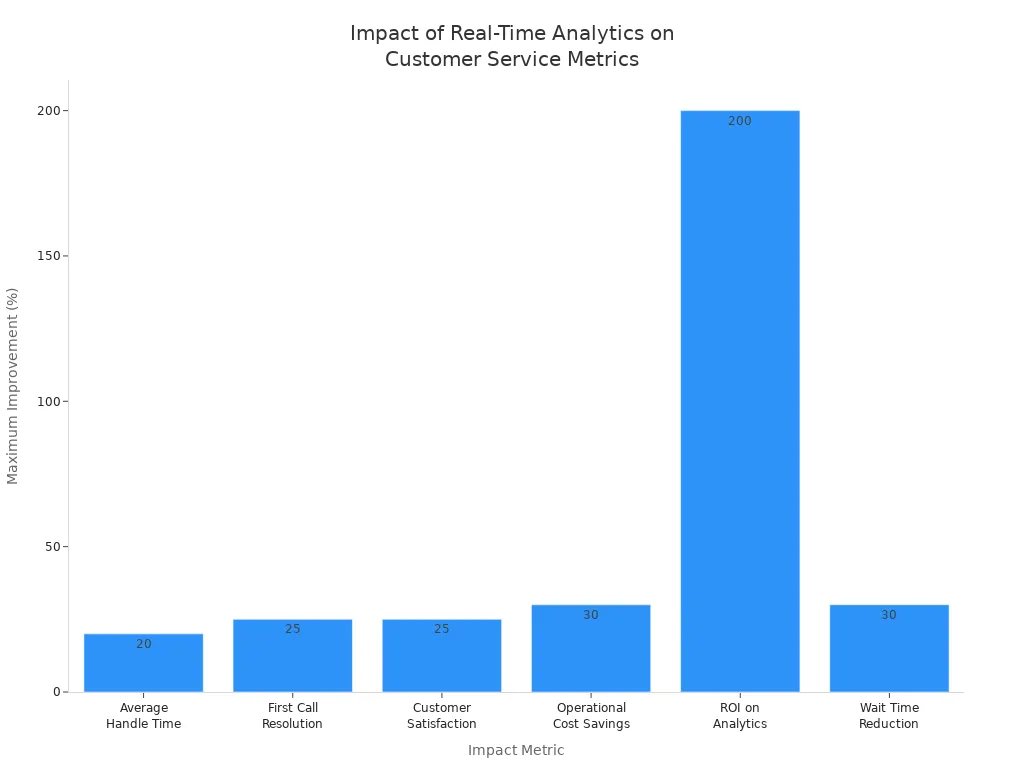
Sobot’s omnichannel platform delivers real-time analytics and dashboards, supporting immediate action and continuous improvement. Companies use real-time feedback to personalize the experience, reduce wait times, and boost satisfaction. Real-time data also supports the voice of the customer, helping businesses adapt quickly to changing needs.
Sobot Omnichannel Solution
Unified Customer Experience
Sobot’s omnichannel platform brings every customer interaction into one unified workspace. Companies connect web, mobile, social media, email, voice calls, and SMS, creating a seamless experience for both customers and agents. Customers receive consistent support, no matter which channel they choose. Sobot’s system uses AI to recognize customer intent and deliver personalized responses. This approach ensures that every customer feels valued and understood. Businesses benefit from a single view of the customer journey, which helps them track satisfaction and improve service quality. Real-time dashboards display key metrics, allowing managers to monitor performance and make quick adjustments. Sobot’s platform supports over 50 languages, making it ideal for global brands seeking a unified experience.
AI and Automation Benefits
Sobot’s AI-First strategy uses a Five-AI system to enhance every part of the customer journey. The omnichannel AI integrates all channels, while scenario-based AI tailors support for industries like retail and e-commerce. The AI Agent answers inquiries instantly, reducing repetitive tasks for human agents. AI Copilot suggests replies, drafts summaries, and retrieves information, boosting agent productivity. Real-time analytics from AI Insight provide detailed dashboards for operational optimization. The intelligent voicebot resolves issues independently, surprising users with its accuracy. Outbound AI agents help increase sales by over 30%. These features work together to deliver a personalized, real-time experience and improve operational efficiency.
Industry Use Cases
Sobot’s omnichannel solution adapts to many industries. In retail, the platform supports the entire purchase journey, from pre-sale questions to post-sale support. Financial services use Sobot to provide secure, real-time assistance. Gaming companies resolve player issues quickly, improving the overall experience. The OPPO case shows real-world impact. OPPO used Sobot’s chatbot and ticketing system to handle high volumes of inquiries during shopping festivals. The result: an 83% chatbot resolution rate, a 94% positive feedback rate, and a 57% increase in repurchase rate. Sobot’s integration and real-time analytics helped OPPO optimize its knowledge base and reduce maintenance by 90%. These outcomes highlight how Sobot’s solution delivers measurable improvements in customer experience and operational efficiency.
Customer service teams improve satisfaction by using the right survey tools. Sobot’s platform helps companies collect survey data, automate survey distribution, and track satisfaction in real time. Survey results show that businesses using Sobot see higher satisfaction and faster response times. Teams can start a free trial or request a demo to explore Sobot’s survey features. Companies should review their survey needs and choose tools that boost satisfaction. For more details, visit Sobot’s official website. Investing in survey solutions leads to lasting satisfaction and business growth.
FAQ
What is customer service evaluation and why is it important?
Customer service evaluation measures how well a company meets customer needs. Companies use surveys and analytics to track satisfaction. Studies show that businesses with strong customer service see up to 60% higher customer retention rates (source).
How does Sobot help improve customer satisfaction?
Sobot provides an omnichannel platform that unifies chat, voice, and email. Its AI-powered ticketing system automates responses and tracks key metrics. Companies using Sobot report faster response times and higher satisfaction scores, as seen in OPPO’s 94% positive feedback rate.
What features should businesses look for in customer service tools?
Businesses should look for real-time analytics, automation, omnichannel support, and integration with knowledge base software. These features help teams respond quickly and keep information organized. Automation can reduce agent workload by up to 40%.
How can knowledge base software support customer service teams?
Knowledge base software stores answers to common questions. It helps agents find information fast and allows customers to solve problems on their own. Companies using this software often see a 25% drop in support tickets.
Can Sobot integrate with other business systems?
Yes. Sobot integrates with e-commerce platforms like Shopify and CRM systems. This integration allows companies to manage customer data and support tickets in one place, improving efficiency and accuracy.
See Also
Best Customer Service Software Solutions To Use In 2024
Comparing The Leading Voice Of Customer Software Tools
Best Voice Of Customer Software Options For 2024
2024 Reviews Of The Best Cloud Contact Center Services
Comprehensive Guide To Quality Assurance Software For Call Centers
